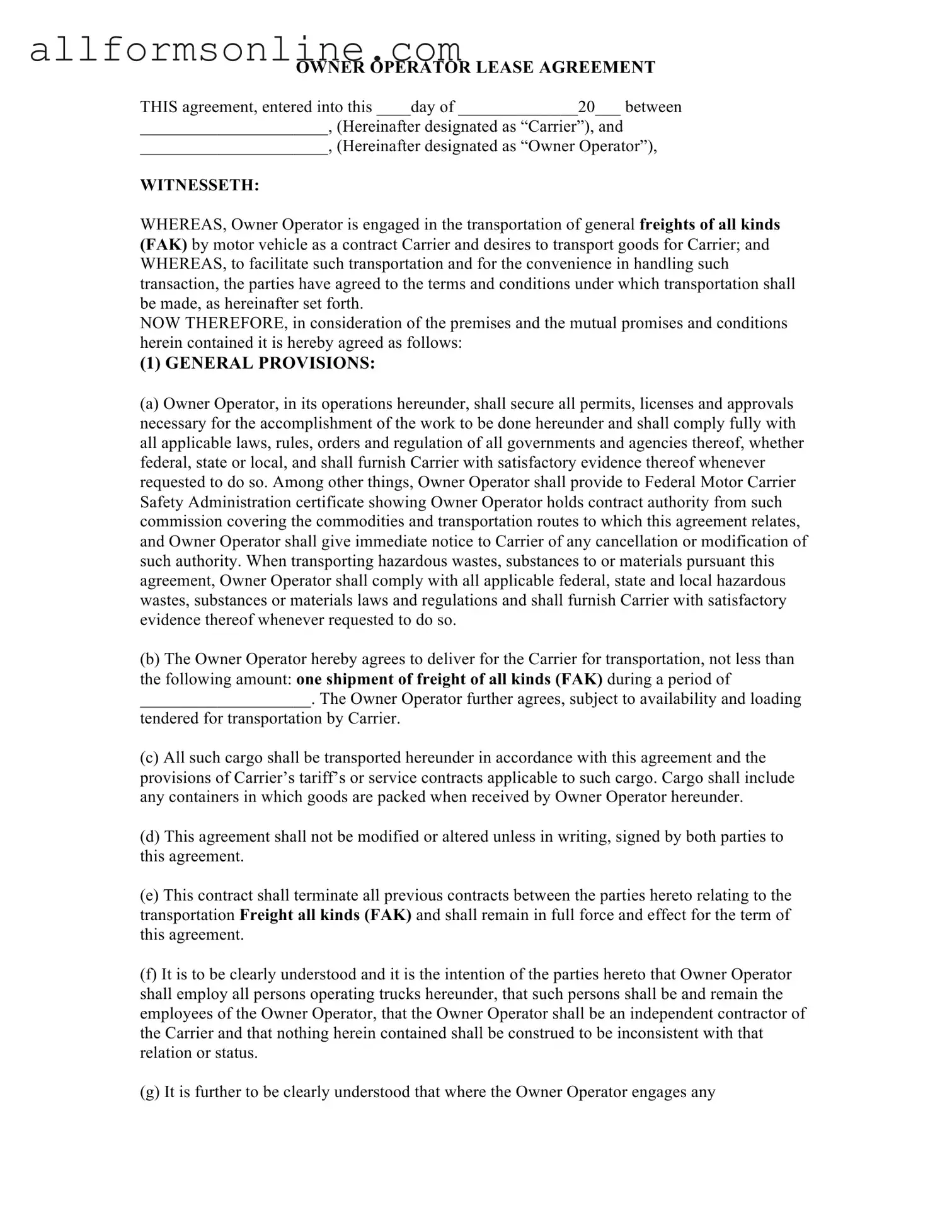What is an Owner Operator Lease Agreement?
An Owner Operator Lease Agreement is a legal document that outlines the terms and conditions under which an owner operator provides transportation services to a carrier. This agreement details the responsibilities of both parties, including compliance with laws, insurance requirements, and the handling of goods. It serves to formalize the working relationship between the owner operator and the carrier.
Who are the parties involved in this agreement?
The parties involved in the Owner Operator Lease Agreement are the “Carrier,” which is the company that requires transportation services, and the “Owner Operator,” who is the individual or entity providing those services using their own equipment. Each party has specific rights and obligations as outlined in the agreement.
What are the general provisions included in the agreement?
The general provisions cover various aspects such as compliance with laws, the responsibility of the owner operator to secure necessary permits, and the nature of the relationship between the owner operator and the carrier. The agreement emphasizes that the owner operator is an independent contractor and outlines the indemnification responsibilities of both parties.
What are the insurance requirements for the owner operator?
The owner operator must maintain insurance coverage that meets the minimum requirements set by the Federal Motor Carrier Safety Administration and comply with the Uniform Intermodal Interchange Agreement (UIIA). This includes cargo, personal injury, and general liability insurance. The owner operator is also required to provide proof of insurance to the carrier.
How is compensation structured in the agreement?
Compensation is based on a rate schedule that is attached to the agreement. The carrier agrees to pay the owner operator for their services within sixty days of receiving an invoice. The specific rates and charges for transporting commodities are clearly outlined in this schedule.
What happens if the owner operator wants to assign the agreement?
The owner operator cannot assign the agreement to another party without obtaining written consent from the carrier. This clause protects the carrier's interests and ensures that the terms of the agreement are upheld by the original parties involved.
What is the confidentiality clause about?
The confidentiality clause requires the owner operator to keep the terms of the agreement and any proprietary information about the carrier’s business confidential. This includes details about suppliers, products, and customers. Disclosure to third parties is not allowed without the carrier's prior written consent.
How are notices handled under this agreement?
All notices related to the agreement must be made in writing and sent via certified or registered mail. This ensures that both parties have a record of communications and that notices are delivered reliably. The specific addresses for sending notices are provided by the parties as needed.
Which laws govern the Owner Operator Lease Agreement?
The agreement specifies that it will be governed by the laws of the state mentioned in the document. This means that any legal interpretations or disputes will be resolved according to that state's laws, providing clarity and consistency for both parties.
